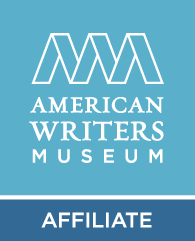[vc_row][vc_column][vc_column_text]
Meet Bill Briscoe, a long-time supporter and volunteer of the Kurt Vonnegut Museum and Library (KVML). Bill is one of our biggest champions. He attends and/or helps out at nearly all of our events, engages with guests and makes sure they are attended to, hosts the monthly KVML book club, serves as our historian, and is always around to lend a hand. We had the opportunity to visit with him during Freedom to Read Week. Here’s what he had to say:

Why
do you support the Kurt Vonnegut Museum and Library?
I first became involved with the Vonnegut Library before we even moved into our initial building on Senate Avenue. My original connection was that Kurt Vonnegut and I both belonged to Delta Upsilon, a college fraternity, for which I am the historian. Subsequently, I also became the historian for KVML, as well.
Why did you get involved in the
KVML book club? Why is this important to you?
I joined the KVML Book Club early on. It has provided me with the
opportunity to read everything Vonnegut wrote, as well as writings about him,
and to discuss these writings with other interested people, some of who have
become good friends. One member, Jon Eller, who is the director of the Center
for Ray Bradbury Studies at IUPUI, has become a friend. The book club also
discusses books and authors Vonnegut liked to better understand why he liked
them.
What is your favorite event at
KVML?
One of my favorite events is the KVML spring fundraiser “Night of Vonnegut.” Besides helping to raise money, I have had the opportunity to meet various notable people (Jim Lehrer, David and Mary Brancaccio, Clarence Page, and Benjamin Patton ) who also are fans of Vonnegut and his writings.
At
KVML, we promote the ideals that were important to Vonnegut: the arts and
humanities, veterans, mental health, the environment, common decency, civic
engagement, social justice, peace, etc. What is it about the work we do that
stands out to you and why?
Not only did Vonnegut
espouse the ideals that KVML now promotes, but his writings challenge readers
to become involved and contribute to these programs and projects that are
impacting his causes. While he had his own thoughts on these, he felt it was
more important to challenge readers and get them to become more active than to
attempt to get them to agree with his positions on these issues.
Why
do you think celebrating the 50th anniversary of Vonnegut’s book, Slaughterhouse-Five,
is so important?
It is important
to celebrate the 50th anniversary of the publication of Slaughterhouse-Five
because it represents a major turning point in his career. He went from being
an interesting niche author to a respected major figure of his era. Proof of
this is the fact that all of his books are still in print. The 1960s was a
critical decade in America’s history. As the Vietnam War was heating up, two
significant World War II antiwar novels bookended the decade: Joseph Heller’s Catch-22
debuted at the beginning of the decade, and Slaughterhouse-Five ended
it.

What are your thoughts on the
new building at 523 Indiana Avenue and the future of KVML?
Our new building opens up all kinds of possibilities and
opportunities to further expand our work. More exhibits and programs will bring
in more visitors and more repeat visits. The café will provide an incentive
for informal visits and meetings. The more people who get introduced to Vonnegut
and his works, the more we will be able to accomplish.
Do
you have anything else you’d like to add?
I think Vonnegut would be extremely happy to see that his hometown
now not only remembers and reveres him, but that Indianapolis has become a
focal point for keeping his ideals alive. As we approach a decade of existence,
we realize that our work has just begun.
[/vc_column_text][/vc_column][/vc_row]



